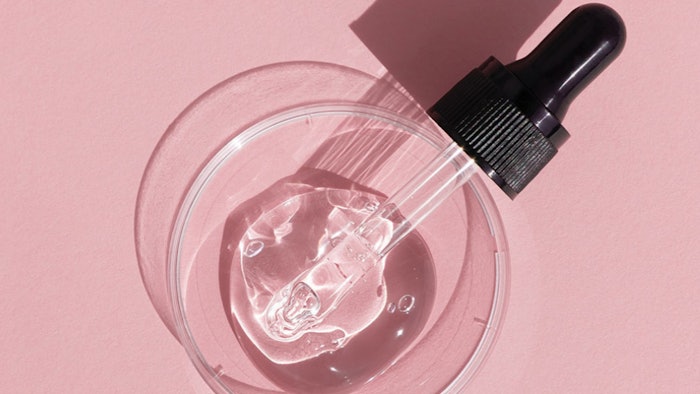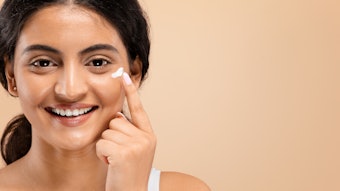
This article delves into the role of sensory testing in the development of cosmetics for skin and hair. Its applications, methodologies and unique place in the innovation toolbox are highlighted, along with expert insights and journal article examples.
This article is only available to registered users.
Log In to View the Full Article
This article delves into the role of sensory testing in the development of cosmetics for skin and hair. Its applications, methodologies and unique place in the innovation toolbox are highlighted, along with expert insights and journal article examples.
In the fiercely competitive world of cosmetics, sensory testing is a cornerstone for innovation. It bridges the gap between product technology and consumer experience, ensuring that formulations resonate not just scientifically, but emotionally.
"Sensory testing plays a pivotal role in the innovation process of cosmetic products, ensuring that consumer perception and responses are integrated from the very initial stages," explains Elena Petrovicova, Ph.D., associate vice president of global R&D at Church & Dwight Co.1 This highlights the importance of incorporating sensory data across multiple development touchpoints, from laboratory trials to home-use tests.
The influence of sensory testing extends beyond product innovation and can shape the storytelling that brands use to connect with their audience. "The sensory properties of a product will define the user's expectations and reinforce the product promise," notes Pauline Hui, scientific advisor at L'Oréal UK&I, underscoring how sensory evaluation can create a product’s signature to make it stand out from competitors as uniquely recognizable by consumers.
By nature, sensory testing is important for both skin and hair products. For skin care, factors like product texture and scent, and speed of absorption into skin and after-feel shape emotional responses. For hair care, key sensory attributes include shine, manageability and longevity of fragrances on hair.
Indeed, even for an established product category like shampoo, the sensory process is highly intricate. Pauline Hui explains, reflecting on her experience as a hair care sensory designer at Unilever: "From opening a bottle of shampoo and smelling it, and pouring the contents into your hand to see and feel it; how it lathers in your hair, how easily it rinses off, and how conditioned it makes the hair feel after drying; through to smelling the hair as it brushes against your face — the complexity of the global consumer with different skin and hair types leads to different needs, habits, preference drivers and ultimately different formulations," she explains.2
This article delves into the pivotal role of sensory testing in the development of cosmetics for skin and hair, highlighting its applications, methodologies and unique place in the innovation toolbox. Through expert insights and examples from journal articles, it explores how sensory testing supports the development of innovative products to meet consumer needs globally and ensure market success.3
Sensory Science and Quantitative Descriptive Analysis
Sensory science is the systematic study of how humans perceive and respond to stimuli from the environment through their senses, such as taste, smell, sight, touch and hearing, according to scientists Janine Doherty, senior research manager, and Rebecca Carroll, research manager at SPI Curion. Sensory science employs a variety of methods such as trained or untrained sensory panels, quantitative psychophysical measurements and statistical analysis.4
Quantitative descriptive analysis (QDA) is a prominent technique used in sensory evaluation5 that employs descriptive panels to measure a product's sensory characteristics. Originally developed in 1974 by Stone, et al., at the Stanford Research Institute, it is now widely applied in cosmetic product testing.6
QDA offers a robust approach by focusing on relative comparisons rather than absolute measurements, making it especially effective in identifying subtle sensory differences.4 QDA relies on carefully selected and trained panels, typically comprising 10 to 12 members, who develop a consensus language to describe sensory attributes for a given product type or category. Evaluations mostly use six-inch line scales to capture relative sensory intensities, allowing for nuanced comparisons between products.
Statistical methods like ANOVA and principal component analysis (PCA) can then be applied to assess panel reliability and analyze differences in product attributes.7, 8 Results are often visualized through tools like spider plots, providing insights into sensory variations and product performance.4-6
The sensory attributes developed by a trained panel are often used when probing liking by the target consumer using untrained panels. Understanding the key sensory attributes is especially important when developing a product in a novel category to optimize the product’s formulation, as well as its overall positioning – including the delivery method and packaging for the corresponding market.
Illustrating Product Efficacy
As stated, sensory studies can lend themselves to teasing out the nuanced differences between products. These differences can be further quantified through objective instrumental measurements.
As an example, Zhang and Ye used a sensory panel of 20 participants to evaluate the aroma intensity of hair bundles treated with conditioners formulated with a microencapsulated versus plain fragrance. The maltodextrin and starch-based microencapsulation significantly enhanced fragrance retention over 5, 7 and 21 days. These findings were corroborated by electronic nose tests, which quantitatively measured aroma retention.9
Additionally, instrumental techniques such as scanning electron microscopy (SEM) and dynamic light scattering (DLS) demonstrated that the microcapsules, averaging 1.7 μm in size, were spherical and adhered to hair fibers, enabling sustained fragrance release. Fourier transform infrared spectroscopy (FTIR) and thermogravimetric analysis (TG) further validated successful fragrance encapsulation with an efficiency of 38%.9
Another study evaluated the ability of a commercial hair oil to “repair” mildly damaged hair bundles by comparing it with a control tap water treatment. Sensory evaluations coupled with instrumental measurements were employed. Sixty human hair bundles were divided into two groups: 30 treated with the test product and 30 with tap water.
Two evaluators assessed gloss and smoothness without knowledge of the groupings. Gloss was judged by the intensity and width of the highlight band under consistent lighting, while smoothness was evaluated through tactile assessment with visual input removed.10 Sensory results showed significant improvements in both gloss and smoothness for the treated group, compared to the control.
Light reflectiona and dynamic friction against the hair cuticleb were applied as the instrumental techniques. The correlation coefficients between sensory evaluation and instrumental results were strong, according to the authors, with values exceeding 0.8, demonstrating alignment between subjective and objective methods.10
In a skin care example,11 sensory testing combined with instrumental methodologies was employed to study the effects of a rice water-based hydrogel for its anti-aging efficacy and consumer appeal. The hydrogel, formulated with 96% boiled rice water, and a control hydrogel simply prepared with 96% deionized water were assessed by a sensory panel of 12 participants who evaluated its texture, ease of application and skin feel. Results demonstrated high scores for hydration, spreadability and overall sensory satisfaction.11
This aligned with instrumental findings via corneometry. After 28 days, the rice water hydrogel showed a 10% increase in hydration compared to the control, underscoring its efficacy. Additionally, in vitro assays validated its antioxidant and elastase-inhibitory properties, reinforcing its anti-aging benefits.11
These studies highlight the importance of integrating sensory panels with instrumental techniques to substantiate performance claims.
Extrapolating to Consumer Liking
To understand which product attributes drive consumer liking, sensory testing principles must be applied with larger and untrained panels in real life scenarios. A study by Joussain, et al., for example, investigated how real-life settings influence user experience, odor perception and the perceived performance of hair care products.12
A total of 256 women, aged 18 to 64, evaluated two shampoos with identical formulations but different scents — one sweet/gourmand and the other citrus — across three settings: at home (118 participants), in hotels (39 participants) and at hair salons (99 participants). Participants rated their emotional states, product liking, product functional benefits (e.g., softness of hair strands, cleanliness of hair) and scent attributes such as intensity, appropriateness and quality.12
Results showed that the setting significantly impacted user perception. For example, hair salons evoked stronger emotional responses like relaxation and focused attention on scent evaluations, while home settings emphasized tactile sensations such as hair softness and foam texture. In hotels, lower scores were observed across most attributes, possibly due to higher user expectations in this context. This study underscored the need to test cosmetic products in various settings to fully understand user experience.12
In his dissertation work, Zhang conducted descriptive sensory analysis with a trained panel to profile sensory attributes like aroma, texture and skin feel across 12 hand creams. To complement this, a home-use test involving 100 female consumers evaluated seven of these hand creams for overall liking, sensory properties and emotional responses. Emotional responses were captured using a lexicon developed specifically for beauty products, which identified 37 positive emotions (e.g., satisfaction, excitement, etc.) and two negative ones (irritation and disappointment).13
The study revealed three distinct consumer clusters based on preferences: one group favored thick, waxy textures; another preferred mild scents with medium thickness; and a third group was drawn to strong scents. Emotional responses varied across these clusters, with attributes like strong aroma consistently eliciting high-arousal emotions such as excitement or energy. Zhang’s research underscores the value of sensory testing in uncovering the intricate connections between sensory attributes, emotional responses, and consumer satisfaction.13
Limits on Sensory Testing for Marketing Claims Support
Thus far we have seen how sensory test methodologies in combination with instrumental methods and in appropriate contexts can be used to illustrate product efficacy and predict consumer acceptance during the product development journey. In specific cases, sensory testing can also be used to substantiate certain marketing claims, according to Petrovicova.
Sensory panel data is effective for supporting descriptive claims, such as "intensively citrusy" or "minty green," says Petrovicova. These claims, however, are only reliable when the sensory panel is robustly trained and the testing methodology is sound, ensuring that the results are demonstrable and verifiable. Comparative claims like "new and improved formula" can also be substantiated if panel data clearly indicates perceptible differences between products.1
While sensory testing can tell us if a product “feels lightweight or has a rich texture,” Hui, cautions that finding out if a certain claim resonates with consumers is key before designing marketing claims. Sensory panels are invaluable for assessing multiple formulations quickly, helping brands identify standout products from a pool of options and refine claims to align with consumer expectations, according to Hui.2
Challenges of Sensory Testing
It is important to note that building and maintaining sensory panels for QDA or other sensory evaluations is a complex process that requires significant investment in time, resources and expertise. And while these panels are critical for generating reliable, nuanced sensory data, several challenges must be addressed to ensure their effectiveness.
Panelist selection and training: One of the first hurdles in building a sensory panel is identifying suitable panelists. According to the Curion team, “Identifying the right individuals to form a QDA panel is a time-consuming and costly endeavor.” Indeed, panelists must demonstrate high sensory acuity, articulation, and a willingness to participate in extensive training. The process also demands careful consideration of diversity to ensure that the panel reflects the target consumer demographic while maintaining consistency in sensory evaluations.
Training panelists involves developing a shared vocabulary for describing sensory attributes and calibrating their evaluations. This can be particularly challenging when panelists have varying perceptions due to differences in age, gender, health conditions or cultural backgrounds, which can lead to inconsistencies in sensory terminology. Repeated calibration and ongoing training sessions are essential to maintain the panel’s accuracy and precision.4
Cultural and linguistic variations: Another significant challenge is capturing consumer perceptions across diverse cultures, as language and cultural context profoundly influence how sensory attributes are perceived and described. Research by Arakawa, et al., highlights these difficulties, particularly in the context of haptic exploratory procedures (HEPs) — the physical movements used to evaluate tactile properties. Studies revealed that sensory terms with identical lexical meanings often evoked different mental HEPs depending on cultural and linguistic backgrounds.
For example, participants from diverse regions, including Asia, North America and Europe, demonstrated distinct preferences for exploratory motions such as stroking versus pressing, when interpreting the same sensory word.14 Building on this, newer research expanded the cultural scope, confirming that these variations extend to other sensory modalities and emphasizing the need for inclusive and context-sensitive sensory panels.15
These findings underscore the importance of designing sensory testing protocols that accommodate cultural nuances, ensuring more accurate and globally relevant results. Without such considerations, inconsistencies in sensory evaluations may arise, limiting their applicability in international markets.
Managing fatigue and retention: Panelist fatigue is another significant concern, particularly for long sessions or projects involving repetitive testing of similar products. “Long panel sessions may tire panelists, resulting in decreased accuracy and precision in their evaluations,” the Curion team explained. Attrition is also common, as panelists may lose interest or become unavailable over the course of lengthy studies. To mitigate these issues, frequent breaks, robust compensation and active engagement strategies are necessary.4
Cost considerations: The decision to maintain an in-house sensory panel versus outsourcing testing to independent centers presents its own set of challenges. "Training and maintaining an in-house panel can indeed be costly and requires significant financial and time investment," notes Petrovicova. However, she emphasizes that in-house panels are highly beneficial for quick-turnaround operations and customized testing that must be conducted regularly. They also provide greater flexibility, immediate access and the ability to tailor testing protocols to meet specific needs.
Conversely, independent testing centers offer advanced infrastructure, regulatory compliance, and a diverse participant pool for more standardized or large-scale studies. “Most often, our approach is a combination of in-house and external [testing] to leverage the strengths of both approaches,” Petrovicova adds. This hybrid model allows companies to balance cost-effectiveness with high-quality, reliable results.
The financial implications of developing and maintaining sensory panels are significant. Basic sensory evaluations can cost tens of thousands of dollars, while comprehensive tests requiring larger sample sizes, specialized equipment and adherence to stringent regulations can exceed hundreds of thousands. Other factors influencing costs include geographic location, the complexity of testing environments, and the need for repeated testing to validate results or support marketing claims.1, 4
Future Outlook
Ultimately, product makers are not only interested in whether consumers like a product, but also in predicting and influencing their purchase intent. As sensory testing evolves, advanced technologies such as physiological sensors are being explored to complement traditional methods.
Sensory + physiological sensor data: For example, a recent conference paper proposed a protocol for combining sensory and physiological data to capture both conscious and subconscious consumer responses. In the study, 27 female participants (ages 20 to 60) evaluated two cosmetic creams having different textures using both self-reported questionnaires and physiological sensors, including galvanic skin response (GSR), electrocardiogram (ECG) and eye-tracking.16
Key findings revealed that self-reported data favored the lighter-texture cream for attributes like ease of application and overall liking, while physiological data — such as changes in heart rate and skin conductance — did not directly correlate with preferences. The combined use of sensors thus provided nuanced insights into how sensory attributes elicit subconscious emotional responses.16
This approach underscores the potential of integrating physiological sensors with sensory testing to refine product evaluations. However, further research is needed to standardize protocols and data analysis techniques, ensuring their broader applicability in the cosmetics industry.
AI predictive modeling: In other work, a proof-of-concept study investigated how AI-driven image analysis could assess sensory characteristics such as hair shine, movement and alignment, which are traditionally evaluated by trained sensory panels or specialized instruments.17 The researchers analyzed a dataset of 1,440 high-resolution images of hair assemblies treated with different formulations. The AI model was trained to recognize and quantify key attributes, including strand alignment, light reflection, and dynamic movement, with remarkable precision and consistency.
To validate results, the AI’s outputs were compared with evaluations from a trained sensory panel. Results showed a strong correlation between the AI-generated metrics and panelist ratings, with statistical significance reported for key attributes such as shine intensity and movement fluidity.17
This validation highlights AI’s ability to objectively quantify subtle differences in sensory characteristics while maintaining alignment with human perception. By complementing traditional sensory methods, AI offers a scalable, efficient and accurate approach to sensory testing, particularly for handling large datasets or reducing the potential for human error in evaluations.
Traditional + behavioral analysis: As sensory testing continues to evolve, combining traditional methods with behavioral analysis offers another exciting avenue for innovation. Bourguet, et al., demonstrated the potential of using an ethological approach to evaluate consumer responses to “luxury” facial skin care products. This method involved observing non-verbal cues such as body language, gaze orientation and micro-expressions to complement traditional sensory evaluations.
These behavioral observations revealed subtle differences in consumer appreciation of skin care products that liking scores alone could not capture. Moreover, the study highlighted how factors such as age and cultural background influenced both verbal and non-verbal consumer feedback, emphasizing the need for diverse and context-sensitive sensory evaluation methodologies.18
Broader consumer motivations and smart stores: The future of sensory testing also lies in understanding broader consumer motivations, as highlighted in the hedonic-utilitarian framework explored by Chang, et al. This framework distinguishes between hedonic motivations, driven by sensory pleasure and emotional engagement, and utilitarian motivations, focused on functionality and efficiency.19
The authors examined these dynamics in the context of smart stores – retail environments equipped with digital technologies like augmented reality (AR) displays, touchscreens and personalized recommendations. These innovations immerse consumers in both hedonic experiences and utilitarian conveniences, creating an engaging and efficient shopping journey.19
For cosmetics, this insight suggests that future sensory testing could incorporate smart store concepts to better understand how consumers interact with products in a digitally enhanced retail setting. By simulating these environments during testing, researchers could capture not only sensory responses, but also the impact of digital tools on purchase intent. Immersive technologies like virtual reality (VR) and AI could further enrich these simulations, allowing researchers to evaluate how products align with both the emotional and practical needs of consumers.
Summary
As demonstrated, sensory testing serves as a bridge between cosmetic innovation and consumer experience, ensuring that formulations resonate both scientifically and emotionally. From foundational methodologies like QDA, to applications in substantiating product efficacy and consumer satisfaction, sensory science remains a cornerstone in the development and marketing of skin and hair products.
The challenges of sensory testing — such as panelist diversity, cultural differences and cost considerations — underscore the need for rigorous protocols and innovative approaches. Emerging technologies, including AI, physiological sensors and smart retail environments, present new opportunities to refine sensory testing and deepen insights into consumer preferences.
By combining traditional techniques with advanced methodologies, the cosmetics industry is poised to create products that not only meet, but exceed consumers expectations, paving the way for personalized, meaningful and globally relevant experiences.
Footnotes
a Skin-Glossymeter GL200, Courage-Khazaka
b Dia-Stron MTT175
References
1. Petrovicova, E. (2025, Jan). Private communication.
2. Hui, P. (2024, Dec). Private communication.
3. Talavera, M. and Chambers, E. (2017). Using sensory sciences help products succeed. British Food Journal, 119(10).
4. Doherty, J., and Carroll, R. (2025, Jan). Private communication.
5. Johnson, M. (2025, Jan). Quantitative descriptive analysis. Available at www.sensorysociety.org.
6. Stone, H., Sidel, J.L., Oliver, S., Woolsey, A. and Singleton, R.C. (1974). Sensory evaluation by quantitative descriptive analysis. Food Technol, 28 (11)24.
7. Herzog, M.H., Francis, G. and Clarke, A. (2019). Understanding statistics and experimental design: How to not lie with statistics. Springer.
8. Marques, C., Correia, E., Dinis, L.T. and Vilela, A. (2022). An overview of sensory characterization techniques: From classical descriptive analysis to the emergence of novel profiling methods. Foods, 11(3) 255.
9. Zhang, S. and Ye, T. (2022). Preparation of natural composite microcapsules containing orchid black currant fragrance and its sustained‐release properties on hair bundle. J Polymers and the Environment, 30 136-150.
10. Jiang, Y., Xu, Z., Qiu, Y. and Zheng, Z. (2023). Comparative study of instrumental measurement and sensory evaluation methods for the repairing effect of mildly damaged hair bundles. Skin Res Technol, 29:e13394.
11. Marto, J., Neves, A., Gonçalves, L.M., Pinto, P., Almeida, C. and Simones, S. (2018). Rice water: A traditional ingredient with anti-aging efficacy. Cosmetics, 5, pp 26-34.
12. Joussain, P., Giboreau, A., Zellner, B., Morizet, D. and Romagny, S. (2024). The influence of real-life contexts on user experience, odor perception and perceived performance of hair care products. Food Quality and Preference, 115 105108.
13. Zhang, C. (2021). Understanding consumers' emotions and sensory experience for beauty care products. Doctoral thesis dissertation. Kansas State University.
14. Arakawa, N. and Nakatani, M. (2022). Cultural differences in mentally evoked haptic exploratory procedures between Asia, Europe and North America. 2022 IEEE Haptics Symposium (HAPTICS).
15. Arakawa, N., Watanabe, T., Fukushima, K., Matsumoto, Y. and Nakatani, M. (2024). Talk to us about your skin: The relationship between spoken language and haptic exploratory procedures. Int J Cosmet Sci, 46, pp 437-456.
16. Miranda-Mellado, J., Serna, J., Garces, G.A., Arrieta-Escobar, J.A., Sadtler, V. and Kacha, M. (2002, Jun). Towards a protocol for preference evaluation of cosmetic products using physiological sensors. 2022 IEEE 28th International Conference on Engineering, Technology and Innovation (ICE/ITMC) & 31st International Association for Management of Technology (IAMOT) Joint Conference. Nancy, France, pp.1-8.
17. Daniels, G., Tamburic, S., Benini, S., Randall, J., Sanderson, T. and Savardi, M. (2021). Artificial intelligence in hair research: A proof-of-concept study on evaluating hair assembly features. J Cosmetic Science, 43(4) issue 4, pp 405-418.
18. Bourguet, C., Pêcher, C., Bardel, M., Navarro, S. and Mougin, D. (2016). The use of an ethological approach to evaluate consumers’ appreciation of luxury facial skin care and discriminate between products: A preliminary study. Food Quality and Preference, 50 pp 7-14.
19. Chang, Y., Hsu, P., Chen, J., Shiau, W. and Xu, N. (2023). Utilitarian and/or hedonic shopping – Consumer motivation to purchase in smart stores. Industrial Management & Data Systems, 123(3) pp. 821-842.





!['We believe [Byome Derma] will redefine how products are tested, recommended and marketed, moving the industry away from intuition or influence, toward evidence-based personalization.' Pictured: Byome Labs Team](https://img.cosmeticsandtoiletries.com/mindful/allured/workspaces/default/uploads/2025/08/byome-labs-group-photo.AKivj2669s.jpg?auto=format%2Ccompress&crop=focalpoint&fit=crop&fp-x=0.49&fp-y=0.5&fp-z=1&h=191&q=70&w=340)




